Earlier this month I was on Randbot’s stream, which lead to the article on Shultide the day after. My presence on his stream reminded me that many months ago I promised to write a piece on this annoying part of YouTube that keeps getting shoved into my face, and presumably yours as well. They don’t have any particular name, but it’s essentially a breadtube adjacent sphere of annoying soyfags who have a hate boner for automobiles and suburbia.
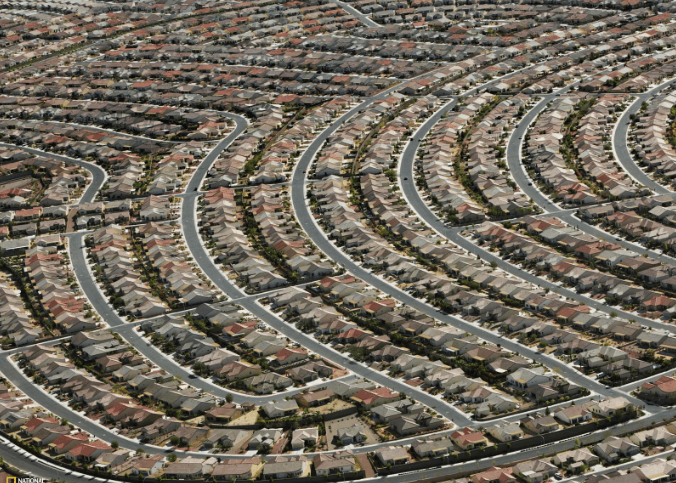
Before I go any further, I absolutely need to state that modern suburbia is artificial and terrible. For example, there is no reason why you should have to get into your car and drive for thirty minutes each way through traffic just to get groceries. You should have a small grocery store within walking distance, and the same goes for most other things. There is no real reason why most of the things you need shouldn’t be built close to you, potentially within walking distance, and I’ll explain the actual reason for this horrible situation later. So don’t think that I’m defending the artificiality of most suburbs, because I’m not. What I am doing is attacking these dipshits who want to play armchair urban planner and have no idea what they are talking about.
A good example of this in action is Hakim’s video above. I nope’d out of that less than a minute in after realizing who made it, the antifa who recently made this anti-White video.
In case you didn’t get that he’s racially attacking White People, he says as much on his twatter.
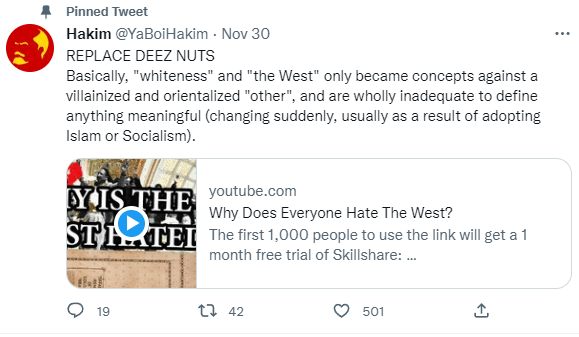
The rest of his videos are in the same vein, and he even calls himself “A Marxist that makes videos from time to time.”

This brave anti-capitalist also has a Patreon and has never been censored by the trillion dollar multinationals who have censored all of us. Because that’s how capitalists would react to a true threat against their illegitimate power, by promoting them through the YouTube algorithm.

Please sign up for courageous Hakim’s Patreon, and tell all of the trans folx of colour that you personally know to join. It’s just $7.50 per video. I think that’s a very reasonable price, seeing that we’re getting a revolution out of it.

I’m skipping over Hakim because I don’t care to listen to that anti-White any more. But I will do an analysis of this soyboy, BritMonkey, and his video explicitly calling for the banning of cars. Lest you think I’m exaggerating, I’ll be transcribing this video quite a bit.
Everytime an unhinged madman pops off a few schoolchildren in the US, ardent defenders of the second amendment usually rattle off the line *spoken in a mocking Southern accent* ‘if we ban guns should we ban cars too because they kill more people than guns do.’
And the answer is hell yeaaaaaaaah.
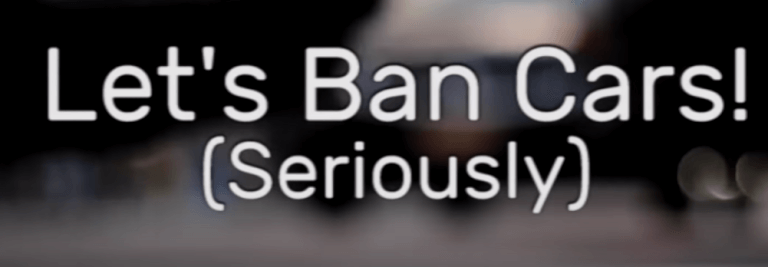
This little e-fag isn’t kidding, and he explicitly quadruples down on his vow to ban cars at the end of the video. We’ll get there when we get there. After whining about car accident deaths and “muh global warming,” he says something that is accidentally insightful, but not in the way he intended.
Switching to electric cars doesn’t solve any of the other problems that cars can cause in cities. For example, space.
…
14% of all space in cities is taken up by car parks alone.

Our little soyboy doesn’t provide a source for this claim, but it seems somewhat plausible. After all, one of the most annoying and occasionally dangerous aspects of modern cities is having to walk over and through gigantic parking lots. This is time consuming, tedious, and ugly. Giant parking lots make it a pain in the ass to go anywhere without a car. Frankly, even with a car these parking lots are annoying, because you have to walk a quarter mile into the store, and then out again with your product. You also tend to need more product, like groceries, to make the tedious trip worthwhile.
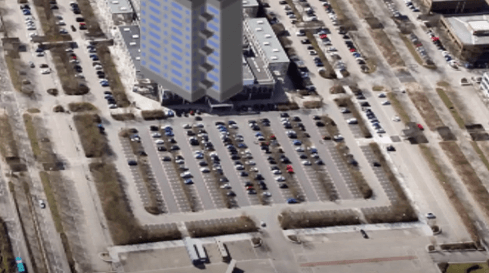
Sorry about the poorly photoshopped graphic, it’s from his video.
Reducing the amount of space that parking lots take up is unambiguously good. But how can we do that without reducing the amount of parking available to people? Well the traffic soyboys would say that you should just reduce the amount of parking and tell car owners to go fuck themselves. They would then say that this will be totally fine and no one will be inconvenienced because everyone will just use public transportation and the elasticity of demand for driving is greater than 1 and blah blah don’t ask questions.
But the reality is that we can absolutely reduce the amount of space that is taken up by parking lots, or at least the space that people need to walk across. This magical high tech solution has existed for decades, and in fact cities already have these things. They’re called multilevel parking garages, and they look like this.
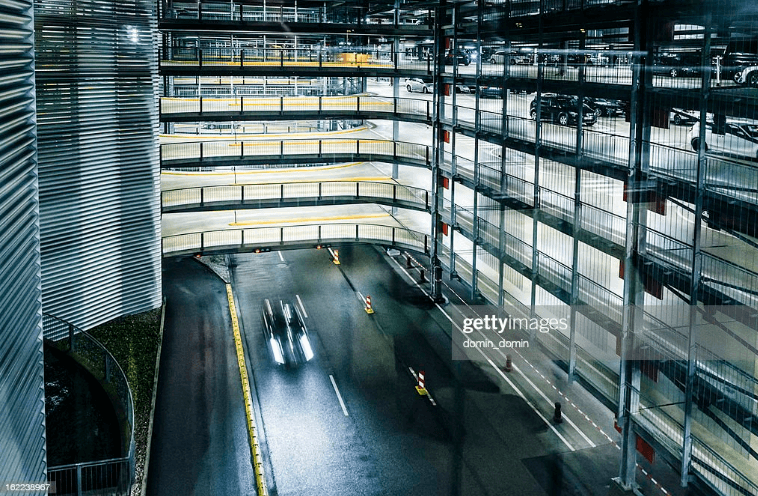
I bring this up, because I’ve seen a few hours worth of content from the traffic soyboys, and at no point in time do they ever suggest any regulations or public investment into building more of these guys. These are much more expensive to build initially than just painting some lines down for a parking lot. Building them is an investment in the infrastructure of a city. But they mean that pedestrians don’t have to deal with the enormous empty spaces that are flat lots, without any decrease in parking spaces, or even potentially an increase. A ten story parking garage can theoretically serve roughly ten times the amount of cars as one single flat lot.
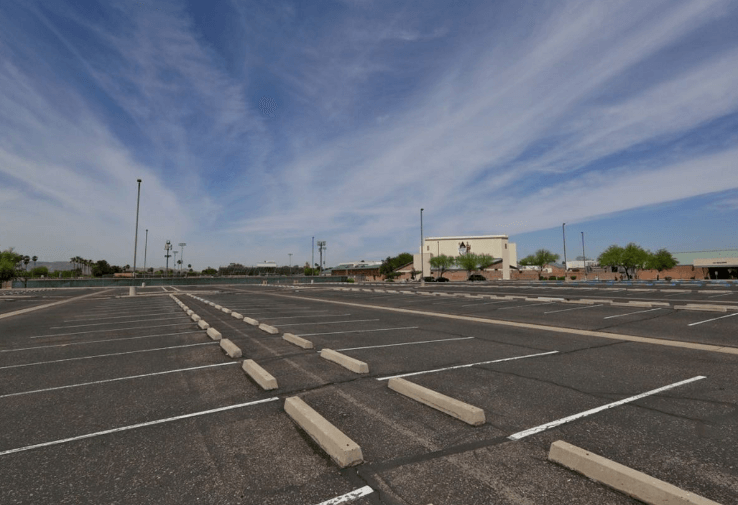
A lack of parking spaces is an extreme annoyance and is even dangerous. I personally have had the experience many times of driving downtown on time, then finding out that the small parking lot near where I want to park is completely full, so I circle around for a good long while in some of the most dangerous driving that I do, since I am unfamiliar with the streets as well as agitated due to being made late by the dipshit city planners who designed a lack of adequate parking. I’m going to stop focusing as much on the road, since I’m looking around for a place to park. And maybe I even pull out my phone and start looking up places to park. I’ve nearly gotten into serious accidents doing this, and I suspect that most people have similar experiences.
I bring this up, because you’re about to hear a bunch of “studies show,” soyboy Arguments From Credentialism where they prove that making the driving experience awful has no impact on driving because “studies” have proven this. I wonder when these fags going to show a study that accounts for the extra traffic congestion from a lack of parking. When are they going to show a study that measures the increased number of car accidents and fatalities from people circling around forever trying to find a place to park? Oh right, never, because they’re a bunch of spiteful mutants who want to pretend to be smarter than everyone else by imagining that cars don’t have a valid reason to exist.
Car culture has also resulted in increased class and racial segregation. In the early days of automobiles in the US, city planners would build low bridges around poorer communities who were predominantly African-American, because these communities could not afford cars.
Instead they were forced to take the bus which could not fit under the bridges and kept them out of areas with higher paying jobs and better schools. You might think this is in the past, but the bridges are still there.
Better schools. He did the better schools bit.

This is who we’re dealing with folks. A soyboy who thinks that Blacks of Colour were prevented from attending the magically better schools, that were definitely not better because they were White of course, because urban planners built low level bridges that prevented buses that the blax had to take from going into these areas. Holy shit, that might be the dumbest “this is why JeQueerus can’t read” just-so hot take I have ever heard.
Overall cars are dangerous, smelly, loud, take up too much space, are racist, and also I just don’t like them. Let’s ban them from our cities. Now, that’s quite a radical proposal, so to be fair, we’ll take a look at some of the objections people might have.
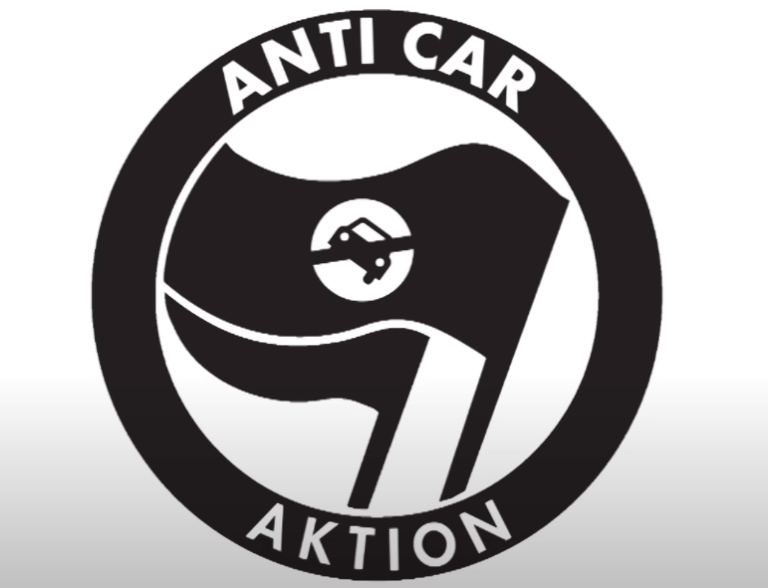
From the video.
What follows is possibly dumber than the “Dequeezus can’t read because bridges were built too low,” take earlier.
Objection number one: Removing cars would be too unpopular.
Here’s Times Square in 2008.
And here it is now. Look at all those unhappy shoppers.
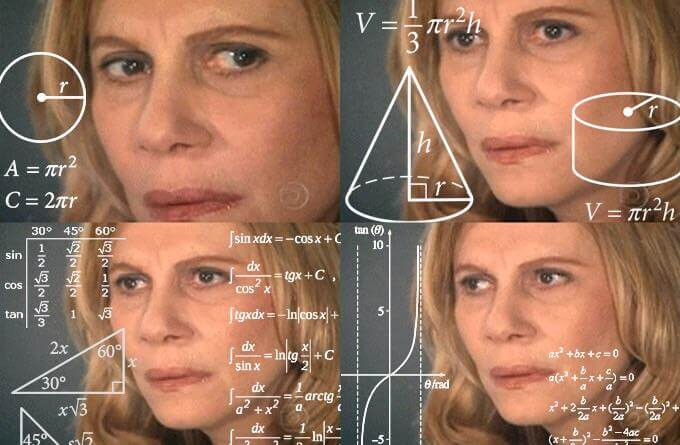
In case you think that I’m strawmanning this retard, he continues on in this vein with numerous examples.
This is Jubilee Gardens in the 1960’s.
And this is it today.
Uhm that poor woman seems to be crying in despair because she came to see cars and all there is now is a beautiful garden instead.

One of the things that annoys me the most in this world is when people who aren’t particularly bright have this conception of their intellect that is mismatched with reality. I always hate writing “I’m too baffled to respond,” but it did take me a minute to collect myself from my stupour induced by his pompous stupidity and type up a reply.
This guy is literally saying that if people prefer gardens to car parks that means you shouldn’t have car parks. It’s a snuck in premise that is so stupid I truly lack the vocabulary to describe it. Car parks and roads are infrastructure. You’re not supposed to enjoy a parking lot, you’re supposed to park there. No one is looking forward to a high speed chase that they anticipate they’re going to get into at the local parking lot, so the entertainment value is essentially irrelevant. You go there so you can do something else that you like, such as walking around Jubilee Gardens, which you might need to drive to, thus necessitating the usage of a car park.
These fucking morons are doing the equivalent of saying that people like theme parks more than electrical power plants. So only an idiot could oppose a proposal to destroy every power plant and replace them with fun roller coasters. Look, here’s a picture of a family having fun at a theme park.

Do you think that this family would be having this kind of fun at this power plant?

No, I don’t think so, which just shows what an act of brilliance it is that we are going to tear down this power plant and build a theme park instead. And you know what else, people’s favourite rooms in their houses are the entertainment rooms, with bathrooms coming in last. So we’re going to legislate away bathrooms, because they’re no fun and we’re going to build entertainment rooms instead.
This is basically the level of intellect that we’re dealing with here. He is literally saying that vital infrastructure is less fun than places designed for fun and therefore does not have a right to exist. And if you think this is bad, it somehow gets worse. In the next thirty seconds he “proves” that everything intuitive about traffic, like adding lanes to reduce congestion, is actually wrong.
Objection Number 2: If we restrict where cars can go, the places where cars can go will become crowded and full of traffic all the time.

Well actually the opposite is true.

Studies show that the more roads we build, the more people drive, and the more congestion actually increases. Every time San Francisco [he meant Los Angeles] adds another lane to their highway, commute time on it increases by one minute, on average.
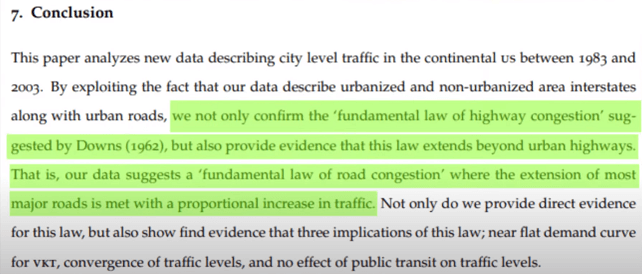
He includes this screencap of a study, with some highlighted text in the middle. First of all, even the highlighted part of the study doesn’t actually say what he thinks it says. I’ll get to that later. And beyond that, the very next sentence flat out contradicts something he’ll say later. But again, we’ll get to that later.
It doesn’t take a genius to figure out that if you decrease the number of roads people can drive on, the less people will drive.
And this is good because?

Once again the soyboy is literally arguing that if we make driving an awful experience less people will drive, which means that driving will be an amazing experience because there will be less congestion. But if that were the case, wouldn’t more people start driving again?
It’s at this point that I have to explain to you an economics term called “elasticity of demand.” Imagine if the price of gasoline doubled. Naturally, that means we pay twice as much for gas, or do we? If the elasticity of demand is 0, or entirely inelastic, then we just bite the bullet and pay twice as much for gas. On the other hand, if the elasticity of demand is 1, then we simply buy half as much gas, and spend the same amount of money. Most items in the real world have an elasticity of demand somewhere between 1 and 0.
This is relevant to the topic, because these breadtubers constantly sneak in the ludicrous premise that the elasticity of demand for roads is greater than 1. In realityland, if you add an extra lane to a road that is full of traffic congestion, you’re going to get proportionally less traffic. But then as people find out about it they’re going to start driving on that road more often. You’ll end up with less congestion, but not as much less congestion as you anticipated, since you’re getting additional traffic. This traffic may come from people who previously used other roads, which will make them less congested, or people who are making additional trips, since the lower travel times justify more driving.
I personally, here in realityland, have experienced this on multiple different occasions with roads that I drove on for decades. When a new lane went in, the traffic congestion went way down. However, people eventually realize that the road has good throughput, and start incorporating it into their trips. This makes that particular road not as fast as you would expect. However, it does relieve pressure on other surrounding roads, since the traffic has to come from somewhere.
But in the Great Utopia Of Traffic SoyboyVille if we take a one lane road and add an extra lane, what will happen is like six times more cars will magically appear from absolutely nowhere and now the traffic congestion will just be way worse. No other roads will have their congestion decreased, since the new cars just spawn into the game server from off screen.
Oh and the same is true for parking spots, by the way. In realityland if we don’t have enough parking spots and add some more, then we now have enough parking, or at least better parking. Now it’s possible that, since driving is so much more pleasant, we’re going to get more traffic on the road, which will lead to more parking spots being used. This might necessitate even more parking spots than we anticipated, but ultimately adding more parking alleviates parking problems.
However, in the Great Utopia of Traffic Soylandia doubling the parking will cause seventeen times more traffic, which will lead to even less parking availability. Then you’re gonna have people clogging the streets because they’re parking in illegal areas and all that. So you might think that adding more parking solves parking problems, but that’s just because you’re too dumb to understand that adding a few parking spots leads to a crippling shortage of parking.
This is how they argue that increasing road lanes leads to worse traffic when logic, your experiences, and tomes upon tomes of data from actual civil engineers says otherwise. After all, that’s why they build roads to ease congestion. But wait, our soyboy has more proof of this obviously untrue midwitism.
In New York City in a trial run of banning cars on some of the streets buses actually had to slow down in order to meet schedules because the streets were so deserted of cars.



That’s because they banned cars you fucking moron. Does everyone see what I mean when I say that this midwit’s pretentious pseudo-intellectualism is so bafflingly stupid that I need a minute to collect myself every time he says something. Obviously there will be less traffic if you ban cars. That the traffic soyboys consider this not just an own, but a genius level insight is so preposterous that I myself lack the intellect to fully explain how stupid this is.
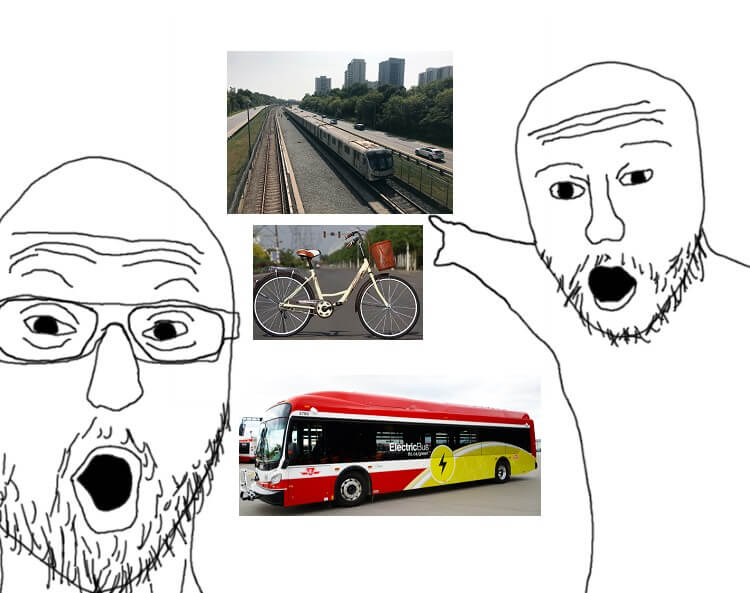
He then gets to a “humourous,” aside, wherein he “deboonks,” the claim that people need cars to get around, by bringing up buses, bicycles, trains, walking, etcetera. There is no text during this part, he just puts up images of various alternative methods of transportation and calls it a day.
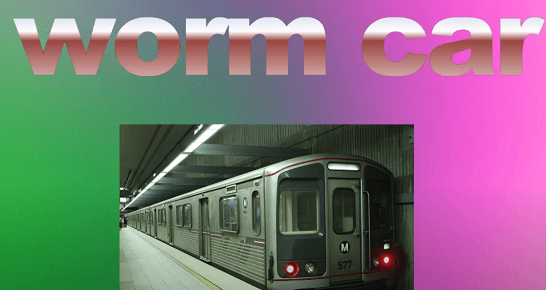
No really. There is no explanation of the strengths and weaknesses of any of these particular methods of transportation over a personal car. The traffic soyboys appear to think that understanding alternate methods of transportation exist is an argument for banning cars. And not just an argument, the only one necessary. Because you see we here in the 99% of the world who don’t want cars banned are just unaware that trains are a thing. Once we have been made aware that buses and trains exist we will naturally all agree that cars should be banned. Oh also, people can walk. Did you know that? Because apparently once you know people can walk you automatically think that cars should be banned.
This is too stupid to be wrong. It’s the type of “logic” that Enrico Fermi coined the term Not Even Wrong for. By the way, you can do the same “logic” in reverse. You see, we don’t need trains or buses, because we have cars instead.

But why stop there. Does this genius not understand that there are aerial methods of transportation? Above is the Cri Cri, the smallest manned plane ever made. Imagine thinking that we need buses and trains when we can just use Cri Cri’s instead. And why not use paragliders? Those things fly, and they’re even smaller. All it requires is a parachute and a fan.

Now you may be wondering how practical it will be to get rid of cars, buses, trains, boats, and all other means of transportation and replace them with personal paragliders. You may be wondering how old people are supposed to use them. How well this is supposed to work in wintertime. How many people lack the skill to properly manage these things. Their use in urban areas. The logistical problems with thousands of these things flying about in the air together with no possible method of air traffic control. The practicality of using one of these things to head on down to the hockey rink with your hockey bag and sticks, or down to the grocery store for a week’s worth of groceries. And many other minute and unimportant aspects of the Personal Paraglider scheme of transportation.
But you see, by asking these questions you’ve simply shown me how stupid you are. Paragliders are a form of transportation, therefore we can ban cars, trains, airplanes, helicopters, buses, bicycles, boats, and even people walking with no downsides, you moron.
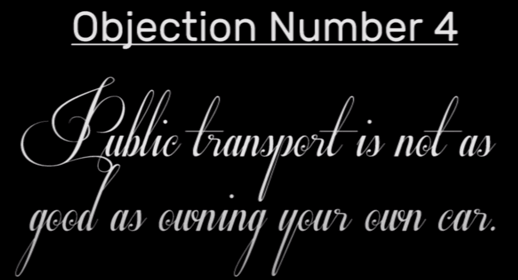
Objection Number 4: Public transport is not as good as owning your own car. Now there are many reasons why somebody might feel better driving than taking the bus or the subway. One is speed and convenience. Why wait for a bus that goes an indirect route stopping periodically when you can just drive straight to where you want to go.
For one, increased bus usage means that more frequent buses and increased routes to meet demand, so there’s no issue there. Existing infrastructure will adapt.

This same argument can be made in reverse for cars. Stuck in traffic? Well that’s fine we’ll just build more roads and parking spots for you. Oh but wait, apparently that’s just the dumb dumb thing to do, since SuPEr GenIUs BoY here understands that building more roads leads to worse traffic, because StUDy SayS.
On the other hand, building more subway routes doesn’t lead to worse wait times for the subway, because reasons. You’re just too dumb to understand that increased road infrastructure leads to worse driving with more traffic, while increased subway infrastructure leads to better subway transportation with reduced wait times. Idiot.
Oh and also the infrastructure can just adapt, because it’s not like building subway lines is a monumental and hideously expensive undertaking. Again, you’re just too dumb to understand that increased subway lines are always possible, practical, and dirt cheap. But car infrastructure is expensive. I’m not going to insult your intelligence by doing something as crude as actually proving this with statistics. I trust you’re not one of those dumb dumb autophiles.
Secondly, if everyone gets into one bus there will be virtually no traffic and you’ll just breeze around the city.

Let’s start with what is true about this statement. Yes, if the tens of thousands of people who are in cars in any given city all warp through time and space into the same bus, then there will be zero traffic. Not “virtually zero” traffic, literally zero traffic. Actually that’s not true, there will be a traffic of one, but zero congestion.
Even if this could be done, those people would all need to be going to the same destination, from the same destination. But if we could also wave a wand and make this true then then wow, traffic problem solved. All we need to do is one physically impossible thing and another logically impossible thing and we’re all set.

Back in realityland it does make sense that increased public transportation would lead to some amount of reduced traffic. Also, people who don’t have cars should be able to get around cheaply, and I think everyone reasonable can agree on that premise, even if we can quibble about the implementation of cheap transportation. But wait a minute, remember that study that this little fag referenced earlier? The one that ostensibly showed that adding lanes to a highway actually makes traffic worse? Well it had something to say about public transportation that he might not like very much.

You see there’s the part he highlights for his video. But let’s take a closer look at that very next sentence.
Not only do we provide direct evidence for this law, but also show find[sic] evidence that three implications of this law; near flat demand curve for VKT, convergence of traffic levels, and no effect of public transit on traffic levels.
Now first of all, the writing quality for this study, which you can find here, is poor. But there was something quite prescient at the very end there.
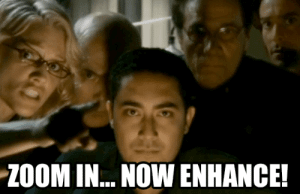
and no effect of public transit on traffic levels.
You see that? That’s the very same study he referenced earlier also showing that public transit has no effect on traffic levels. So first of all:

But how do we reconcile public transit having no effect on traffic levels, when even we living outside of the Great Soyboy Public Transportation Utopia would logically expect that to be at least somewhat true? I expect the benefits of public transportation to most drivers to be exaggerated, especially by these people. Later on in this series you’ll see explicit arguments that claim that, since a bus can hold fourty people or so, that one bus represents fourty cars off the road. This is the kind if simplistic midwit thinking that annoys me, as it doesn’t take into account buses being partially full, park and rides, and the general obnoxiousness of buses stopping, unloading, loading, starting again, and holding up traffic all the while.
But even with that I can easily believe that buses represent a net positive for drivers. I’m not going to accept the premise as an ironclad law in every single case, but I would bet that buses do generally lead to an improvement in traffic levels. So how come this study “showed” the opposite?
Well because it didn’t actually show that, nor did it show what xir soyfaggot said, that adding lanes to roads increases the traffic congestion. Here is the entirety of the conclusion.
This paper analyzes new data describing city level traffic in the continental us between 1983 and 2003. By exploiting the fact that our data describe urbanized and non-urbanized area interstates along with urban roads, we not only confirm the ‘fundamental law of highway congestion’ suggested by Downs (1962), but also provide evidence that this law extends beyond urban highways. That is, our data suggests a ‘fundamental law of road congestion’ where the extension of most major roads is met with a proportional increase in traffic. Not only do we provide direct evidence for this law, but also show find evidence that three implications of this law; nearflat demand curve for vkt [Vehicle Kilometers Traveled], convergence of traffic levels, and no effect of public transit on traffic levels.
The conclusion continues below, but what this actually says is that if you increase the highway network in LA by 20%, you get something like 19% more transportation, and only 1% reduction in congestion because there is so much pent up demand. The snarky midwit misinterprets this to mean that as you add lanes the congestion goes up, when the opposite is true.
We also consider the sources of new traffic elicited by extensions to the interstate network. We find that changes to individual driving behavior and increases in trucking are most important. Migration is somewhat less important. Surprisingly, diversion of traffic from other road networks does not appear to play a large role. Importantly, our data provide little evidence that extensions of public transit will reduce traffic.
High levels of induced demand do not necessarily imply that improvements to the highway system are not in the public interest. However, our calculations suggest that an average extension of the interstate network does not result in sufficient travel time improvements to justify its cost. Two caveats apply here. First, our welfare calculation excludes some possible external benefits unrelated to travel time savings. Second, certain specific improvements of the system, for example inexpensive improvements to bottlenecks, may well be justified even if an across the board expansions are not.
A similar comment applies to public transit. The fact that increases in public transit do not reduce traffic does not imply that such improvements are not in the public interest. While we are not able to perform a welfare calculation to evaluate extensions to bus based public transit, we suspect on the basis of earlier research (Kain, 1999, Duranton and Turner, 2008) that improvements to bus-based public transit are often welfare improving.
We make two final remarks in closing. First, throughout our analysis we find that our instrumental variables estimations show find a similar relationship between roads and traffic as does ols. Positing the validity of our instruments, this suggest that the assignment of roads to msas is unrelated to traffic (conditional on control variables). If true, this almost certainly results in lower welfare than would assigning roads to places with higher traffic levels. Second, we note that this research eliminates both capacity expansions and extensions to public transit as policies to combat traffic congestion. On the other hand, our estimates of the demand for vkt indicate that vkt is quite responsive to price. Together, these findings strengthen the case for congestion pricing as a policy response to traffic congestion.
That might have been a bit much for you to take in, but essentially what they are saying is that when you add more lanes to a highway or major urban road in Los Angeles, the elasticity of demand is in fact close to 1. Said demand, at least in LA, appears to come mostly from trucking, followed by personal driving, and finally from people using these major roads instead of side streets. On top of all of that, there is huge immigration into LA, which stretches the road infrastructure to the max, thus necessitating extra lanes just to break even.
That was the conclusion, here’s the abstract.
We investigate the relationship between interstate highways and highway vehicle kilometers traveled (VKT) in US cities. We find that VKT increases proportionately to highways and identify three important sources for this extra VKT: an increase in driving by current residents; an increase in transportation intensive production activity; and an inflow of new residents. The provision of public transportation has no impact on VKT. We also estimate the aggregate city level demand for VKT and find it to be very elastic. We conclude that an increased provision of roads or public transit is unlikely to relieve congestion.
It is somewhat funny and somewhat annoying to me that this midwit soyboy made such a fundamental error in reading comprehension that he misinterpreted “a proportional increase in VKT with highways” as “congestion goes up when you add more lanes.” What they actually said is that congestion only slightly goes down, probably because the existing road network is so massively overworked that there is so much pent up demand that it doesn’t make any individuals trip that much shorter. Having said that, it enables more people to drive.
I actually have firsthand experience with Los Angeles as a former trucker. I can tell you that I have had multiple occasions of waiting 3+ hours to go 20 kilometers on the highway. The traffic is unreal, and it is so bad that I would not be surprised if there were tons of people who would like to go and do trips, but they say “well that would take me four hours so LOL no way.” This is what pent up demand means. Adding more lanes lets more people do the trips that they want, which is undoubtedly good, but there is so much pent up demand that the new road capacity gets almost 100% filled immediately. These soyboys say that shows the poor investment that new highway lanes provides, when it actually shows the exact opposite. They’ve snuck in the premise that more people being able to transport themselves to do the things they want is somehow bad.
If you have a market that is so underserved in terms of roads that they instantly use all the increased roads that you give them that is more of an argument for building roads rather than less of an argument. I really can’t get over this, because it’s such a dumb premise. The purpose of roads is not to never have congestion. The purpose of roads is transportation. If you add lanes to your highways you will get some combination of more transportation and less congestion. Those are both good. If, as in LA, your highways and major urban roads are already so vastly underserving demand that the new lanes bring 95% more transportation and 5% less congestion that is simply a sign that you need to add even more lanes because people clearly want more.
That is real civil engineering analysis. In contrast, the traffic soyboys don’t even understand the studies that they themselves offer as “evidence,” for their idiotic claims that increasing lanes increases congestion quite explicitly show the opposite. Increasing lanes mostly increases transportation and has little effect on congestion but only in areas like LA where there is massive pent up demand. In other areas you would get a more balanced mix of the two.
Oh and by the way, he says this in his video, which is supposedly from the study.
Studies show that the more roads we build, the more people drive, and the more congestion actually increases. Every time San Francisco [he clarifies that he meant Los Angeles] adds another lane to their highway, commute time on it increases by one minute, on average.
That’s nowhere in the study. It’s not in the abstract. It’s not in the conclusion. It’s not in the middle either. It’s directly contradicted by their results. He just made it up.
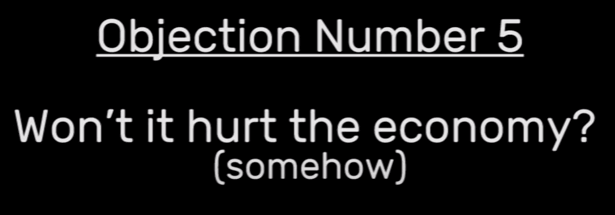
This is getting long, but he just keeps making snarky midwit arguments that I feel compelled to cockslap back into place.
Objection Number 5: Won’t it hurt the economy (somehow). This is a resounding no. For starters, the 4.5 million dead people that cars cause per year through accidents and air pollution don’t contribute to any business other than the undertakers.
You’re right, but they also don’t demand economic production by virtue of being, ya know, deceased. You. Fucking. Moron.

Seriously we are dealing with a guy who is so stupid that he doesn’t appear to understand the importance of GDP/Capita over raw GDP.
When Barcelona banned cars on through roads in 2013 businesses on these roads reported higher returns in receipts. Passers by walked slower, enjoyed their time outside more, browsed in more shops, and bought more things. The value of these businesses also increased between 10 and 30% simply by the fact that people were walking near them instead of driving past.
JFC kill me now. How many faulty premises is this little gaffer gonna sneak in?

What happened to the businesses that were not privileged by having the city subsidize walking areas in front of them? Were those business owners happy? Because it is obviously true that those types of businesses would prefer to be connected to walking areas instead of road infrastructure. Only now they are put at a competitive disadvantage due to these other businesses enjoying walking areas while they have essential infrastructure in front of their stores. And I do mean essential, since transportation is most definitely essential, despite what these armchair urban planners believe.
For the record, I’m not speaking for or against this particular policy of Barcelona. In fact, I am a big believer in pedestrian only areas of cities, and large open pedestrian areas as well. This may have been a good thing overall, but BritMonkey’s claim is a non-sequitur that doesn’t come close to justifying his midwit snark.
Clearly, the evidence and arguments are in favour of removing cars from our cities.
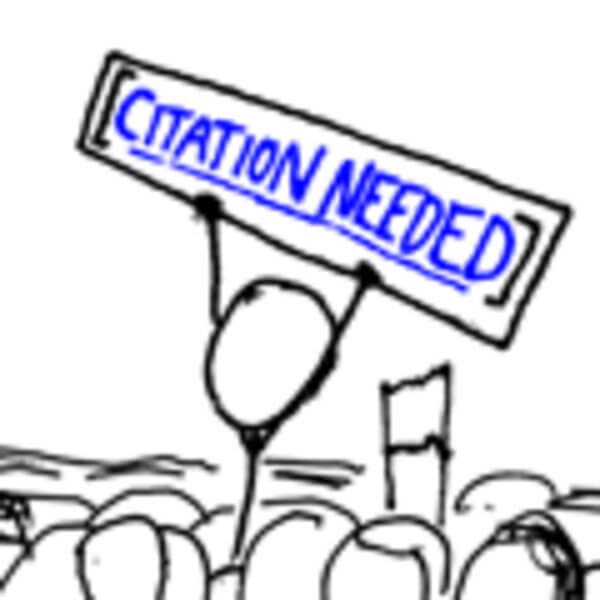
I know I’m beating a dead horse, but I love how one policy in Barcelona where cars were banned from certain through lanes means that the “arguments and evidence,” are all in favour of banning cars from cities entirely.
But how would you go about doing that? The answer is simple, we must do everything in our power to make life a living hell for motorists.
I hope you have a spare kidney because it’s going to cost you twelve pounds to drive within the city limits every single day (London).
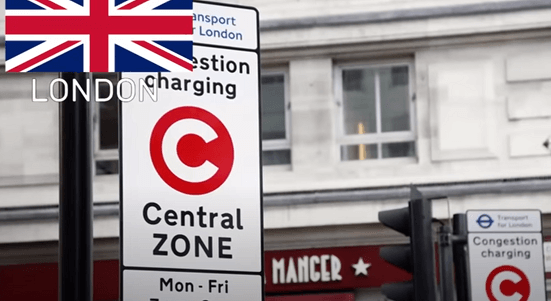
All of these policies he proposes have been implemented elsewhere. I’m not going to screencap each one, I’m just going to write the city name in brackets.
Also speed limits are capped at 10km per hour for personal vehicles. Have fun driving at a snail’s pace you fat moron. (Barcelona).
Want to park your car at a car park? Sorry, there’s a price and a 50% sales tax. (Oslo)
And street parking? Doesn’t exist. (Tokyo)
We’re also adding a ton of bike and bus lanes meaning car users are now second class citizens on the road. (Helsinki)
Public transport is now free and has a budget the size of the friggin moon. (Tallin, Estonia)
We’re going to install a national belief that cycling is patriotic. (Amsterdam)
And we’re also gonna have rentable electric golf carts to get around town. (California)
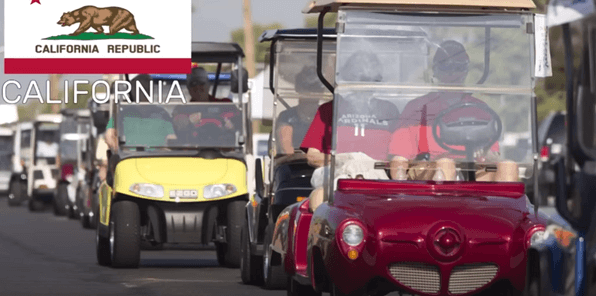
Of course our favourite midwit sneaks in yet another premise, one shared by seemingly the entirety of traffic breadtube. It is the belief that car users must be made to suffer for some reason. The driving experience must be made as unpleasant as possible on behalf of the brave trannies of colour on the bus.
In reality, people who take public transport should want driving to be as nice as possible so there’s less wait for the subway and other means of public transportation. As someone who had to take a lot of public transport at various points in my life, I can tell you that having less people waiting for the subway so you don’t have to watch five or six trains go by is quite lovely. The same goes for the bus.
People who drive cars should want public transportation to be as nice as possible, if for no other reason than to reduce road congestion. But people who use public transportation should want driving to be as nice as possible, if for no other reason than to reduce wait times for public transportation. The idea that these groups should be antagonistic towards each other is asinine. And any serious transportation plan is going to make life better for everyone, which is absolutely possible.
When more and more people make the move to public transport, we’ll finally ban all cars from our cities and suburbs. Of course people with disabilities will still be able to drive and park cars in cities, as is still the case for everywhere that has banned cars.

Even if you banned all personal cars from the city, with the exception of disabled people, you would still need roads and unloading areas for the 5 ton trucks to transfer goods to the stores that need them. What is he proposing instead, bringing in goods to a rail station and then transferring them with horse and buggy?
Banning cars in some choice areas of a busy downtown is something I can support in order to create pleasant and safe walking and living spaces. Banning cars in the entirety of cities, let alone suburbs, is idiotic. If you’re going to have all the road infrastructure for trucking, then you’re wasting a huge investment by not allowing personal vehicles since you already paid the financial cost to build the road system, as well as the design cost to your city of building these roads.
For those in rural areas, go ahead and keep driving your cars. But be warned that we’re also pulling out the motorways. Yes, I also wanted to touch briefly on getting rid of motorways, autobans, and highways as well.

Wow, that seems like it would have a massive negative effect on rural people’s day to day lives. I’m sure the guy who can’t understand the studies that he himself cites is going to have reams of proof for us. After all it would be stupid to –
Rail travel is less damaging for the environment, is probably cheaper than paving over vast swathes of countryside with ashphalt.
Oh it’s probably cheaper? Don’t feel like you need to make sure that it’s cheaper before radically re-engineering society away from cars. I think I speak for everyone when I say that your hunch is all the evidence that we need.

The environmental benefits are dubious, especially because he invokes muh global warming catastrophism. But he gives us some other benefits of trains.
[Train travel] lets you enjoy the stunning scenery, lets you read, work, and talk face to face along the way. Has no traffic jams, and barely any noise or air pollution.

The car haters bring up the benefits of rail travel without mentioning the downsides, but we shouldn’t do the opposite. Trains do have a lot of benefits, especially high speed rail. The idea that these forms of transportation are in a competition to the death with each other is aburd, and I’m not going to let myself get Finkled by over criticizing rail travel.
In summary, cars are disgusting. And if you live in a city you are morally obliged to use public transport whenever possible. When we shift our municipal psyche away from a culture of cars and towards pedestrians and community transport cities will become more enjoyable places to live and work instead of just a soulless hub of tarmac. Removing obstacles to economic growth, social spaces, class mobility, and good health can’t ever be a bad thing. Of course getting rid of cars won’t turn cities into Utopias overnight, but it’s a good start.

Finally it is over. Ten minutes of painful stupidity, but it’s over. We had a plethora of arguments that are officially Not Even Wrong, in that they are so far removed from reality that they cannot be taken seriously enough to even deboonk. Arguments like “other forms of transportation exist, therefore cars don’t need to exist.” And that’s when he’s not misreading straightforward studies or flat out making up claims like “for every lane of highway added in LA, travel times go up one minute.”
Despite all this, it’s undoubtedly true that cities and especially suburbs are car dependent hellscapes. It’s also true, as we’ll see in our next installment, that most of Europe does not have this problem to anywhere near the extent that North America does. Finally, the lack of a North American high speed rail network comparable to China, Japan, and Europe is inexcusable. To some small extent it is because the countries are less dense. Mostly it is a result of deliberate and malicious top down social and physical engineering that works to the benefit of a select few and hurts everyone else. Well that and Canada/US government being even more parasitical and evil than European governments. We don’t have money for high speed rail, we need that for wars for Israel goy.

But in all the traffic soyboys whining and pretend Machiavellian scheming to get rid of cars, to my knowledge only one of them ever stumbles upon the actual reason for this awful situation. Unfortunately we’re going to have to call it quits here. We’re already at 7k words almost on the money, and I think I’ve established how infantile and malicious these people are. Next time we’ll get to the One Weird Trick to massively improve the state of transportation.

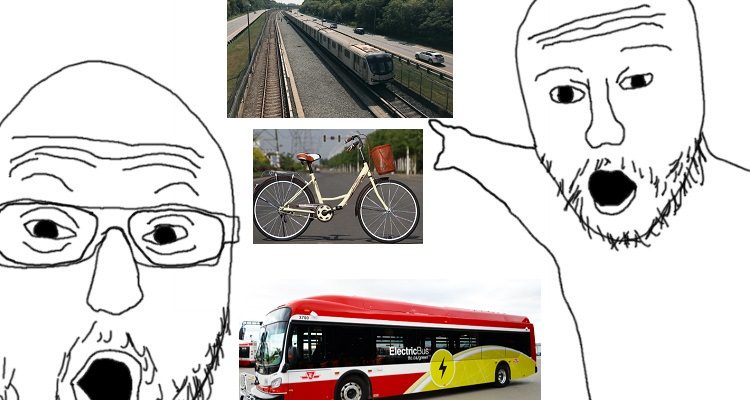

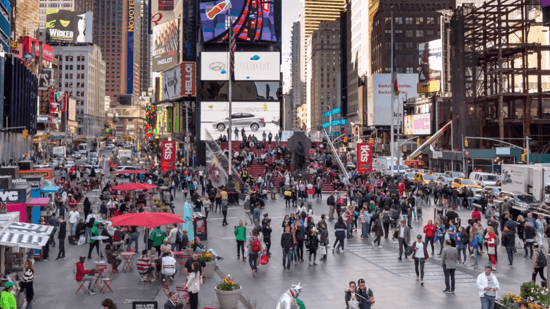
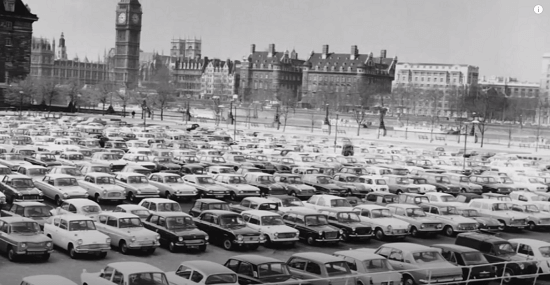
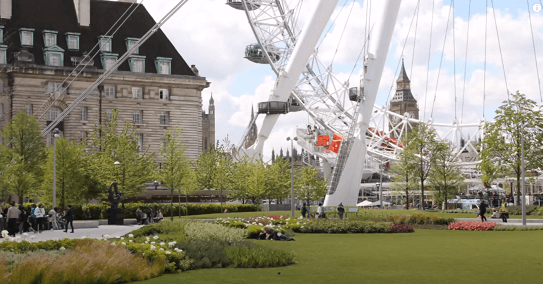


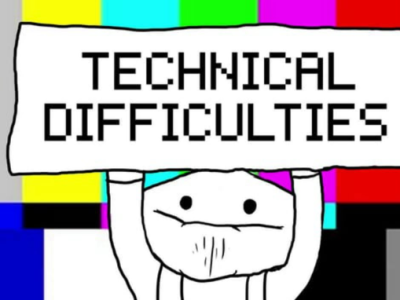

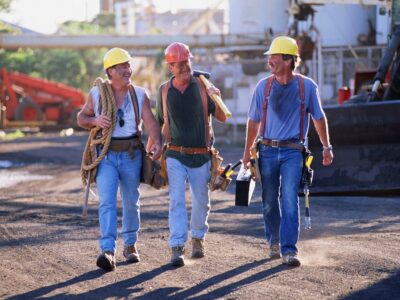






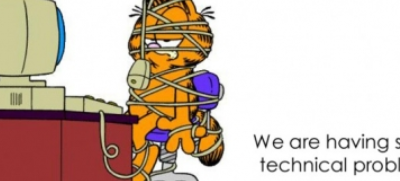
I think the fundamental problem is a severe lack of bullying in schools. In a normal society, these people would already have years of experience being beaten for saying and doing stupid shit before exiting high school.
Without this sort of early social conditioning, these people enter adulthood being completely unaware of what stupid useless shits they really are and how utterly valueless their opinions are.
Lots of these retards wouldn’t last a day in their so-called “car-free” utopia. Biking, walking, waiting around on train platforms, or for bus transfers would be the end of them. Double-so if they are carrying a heavy bag or box.
Having said that, expect it to become government policy alongside NZ2035 and NZ2050.
I always make it a point to complain about their anti-White attitudes in these videos. The “Not Just Bikes” faggot occasionally puts out videos to “purge his viewership of nazis.” These people suck and like all Reddit homos they think they’re smarter than they actually are.
Great point there HorseGirl Respecter. Even the less obviously anti-White stuff is still Reddit-tier.
pauli coined not even wrong, not fermi. otherwise great article
Good catch.
[…] PSA: Deboonking the Traffic Soyboys Part 1 – How to be a Snarky Midwit who Hates Cars for all … […]
Neurotic DUMBSHIT suburbanites have zero initiative, and that’s why they live in suburbia, a hell within a hell planet. Each of them laying awake at night worrying that a dandelion might be growing in their lifeless chemical stew lawn of 10×10 feet.
They need to stay there with their face diapers on and I need to be given financial compensation every time I see that homo jew with clown hair.
Eagerly waiting for traffic soyboys part 2!!
Faggots like this should be forced to take a bus or subway in Baltimore. Let them experience the joys of niggers and street shitters that they want to force on regular working and middle class White people. They have never experienced the effects of their shitty elitist policies in their lives. Bugmen like this have corporate jew jobs and live in condos in Brooklyn or gated communities.
Like, i’m sorry, soy prick, unlike you, i’m a filthy goy and don’t have the shekels to travel to Tokyo and Amsterdam.
Yep. Focusing on this more with my third part in this series.
But Rakeman, even if it won’t happen on doom graph timelines, oil isn’t infinite and will eventually run out. Shouldn’t we come up with alternatives today?
Oil will slowly increase in price as there’s less of it. So we can figure it out then.
[…] the way back in the very first piece I mentioned the term “induced demand,” and how it shows the superficiality of the […]